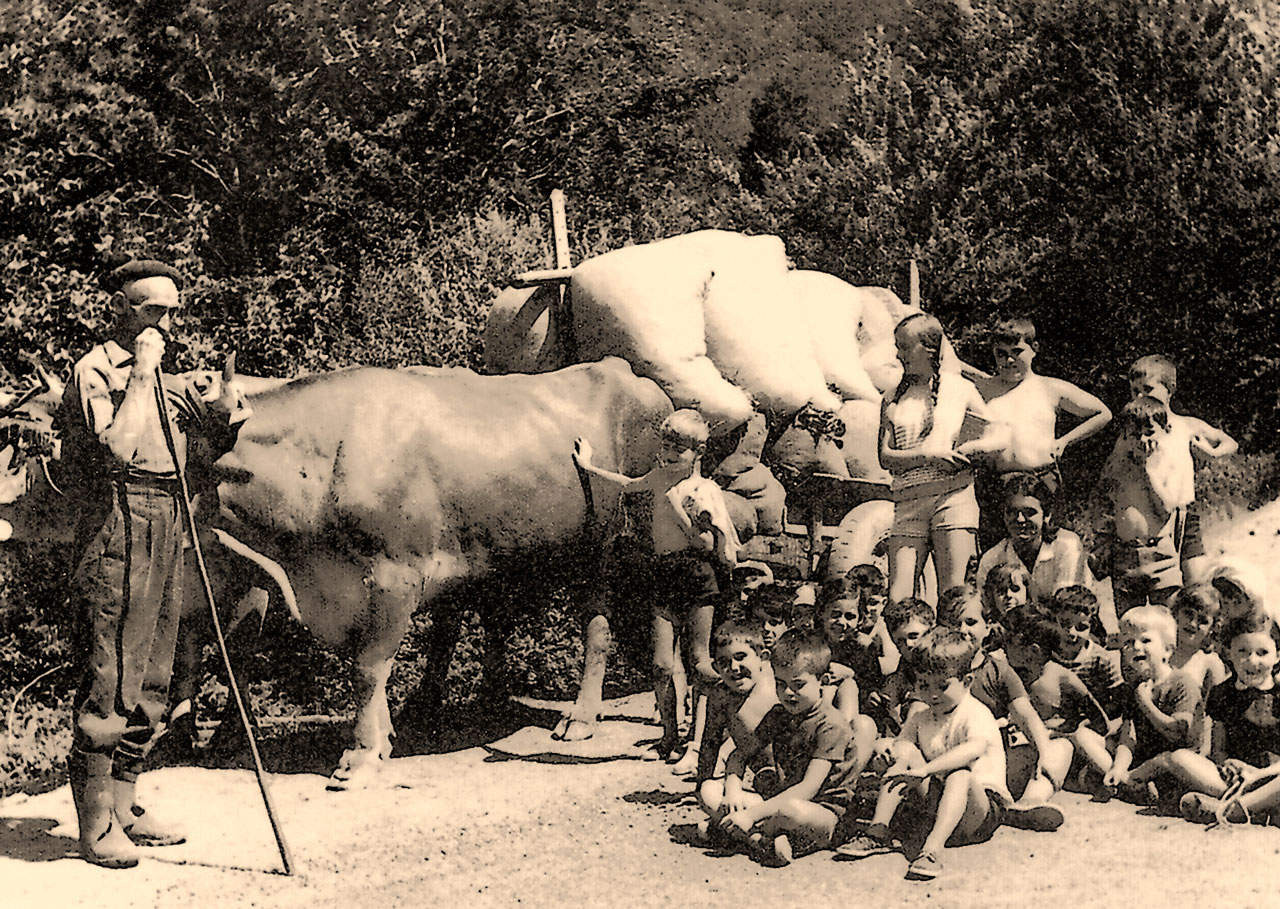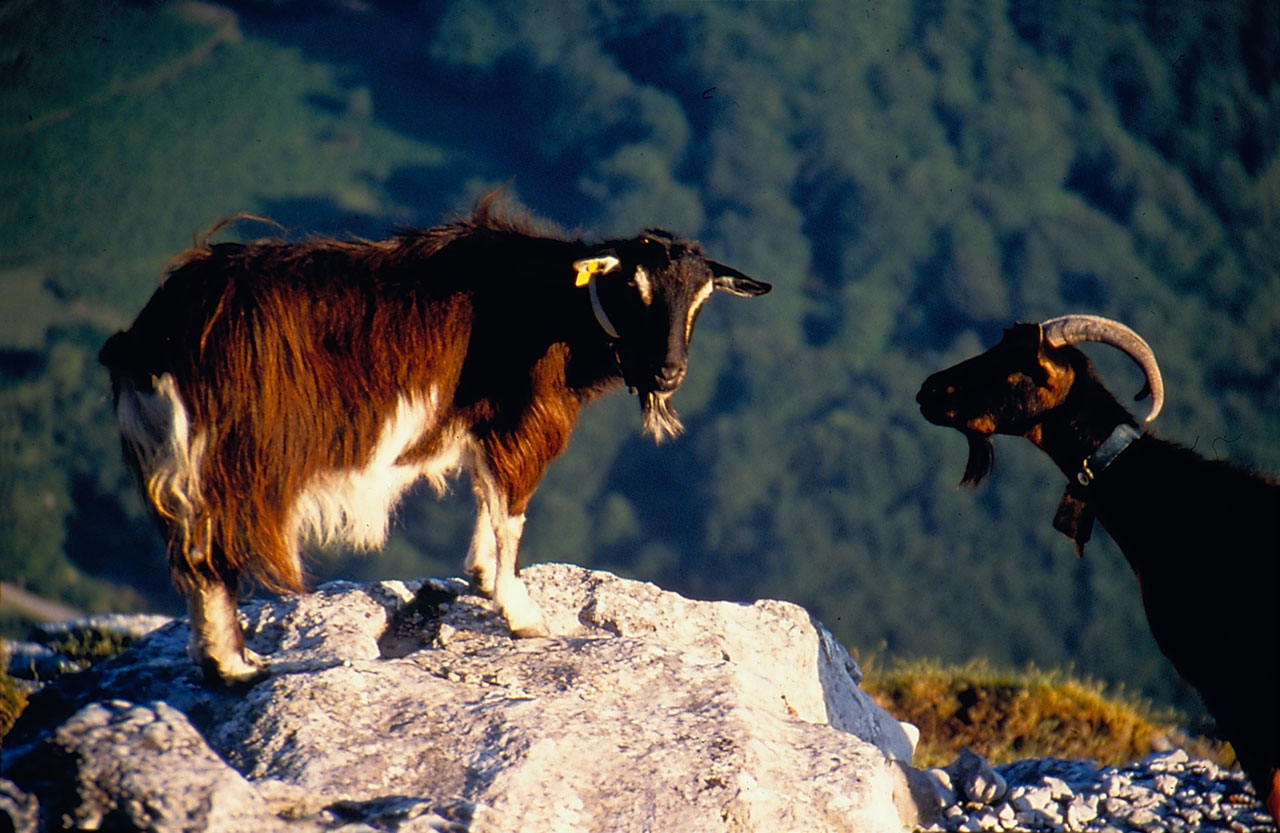Diferencia entre revisiones de «Main Page/en»
De Atlas Etnográfico de Vasconia
| Línea 104: | Línea 104: | ||
====[/atlas/juegos/A-chorro-morro.jpg|Leapfrog jumping. Source: Iñigo Irigoyen, José. Folklore Alavés. Vitoria-Gasteiz: Chartered Government of Álava, 1949.|''Astoka'' <br />One or more participants bend down in a position that is usually called a frog and the others jump over them.||]==== | ====[/atlas/juegos/A-chorro-morro.jpg|Leapfrog jumping. Source: Iñigo Irigoyen, José. Folklore Alavés. Vitoria-Gasteiz: Chartered Government of Álava, 1949.|''Astoka'' <br />One or more participants bend down in a position that is usually called a frog and the others jump over them.||]==== | ||
| − | ====[/atlas/juegos/ | + | ====[/atlas/juegos/Vestidos_y_adornos_vegetales_Egozkue_1967.png|Vegetal clothing and accessories. Egozkue (N), 1967. Source: José Zufiaurre, Etniker Euskalerria Groups.|Akerrak adarrak okerrak ditu, <br />adarrak okerrak akerrak ditu, <br />okerrak adarrak akerrak ditu. <br /><br />''Tongue-twister''||]==== |
====[/atlas/juegos/A-enfermeras-Getxo-1993.jpg|Doctors and nurses. Getxo (B), 1993. Source: Jon Elorriaga, Etniker Euskalerria Groups.|Txikia banintzen, handia banintzen, maiatzerako burutu nintzen. <br />''Riddle''||]==== | ====[/atlas/juegos/A-enfermeras-Getxo-1993.jpg|Doctors and nurses. Getxo (B), 1993. Source: Jon Elorriaga, Etniker Euskalerria Groups.|Txikia banintzen, handia banintzen, maiatzerako burutu nintzen. <br />''Riddle''||]==== | ||
| − | ====[/atlas/juegos/ | + | ====[/atlas/juegos/Umetxo-taldea_Zeanurin_aurrekoa_parrantolarekin_Zeanuri_1920.jpg|Group of children. Zeanuri (B), 1920. Source: Labayru Fundazioa Photograhic Archive: Felipe Manterola Collection.|Children in the traditional society, both in towns and in countryside, only really had the toys that they made themselves. Games were more common than toys, and the latter were just a basis for the former.||]==== |
====[/atlas/juegos/Ninos-con-patinetes-y-triciclos-en-la-Florida.jpg|Children riding scooters and tricycles at Florida Park. Source: Municipal Archive of Vitoria-Gasteiz: Ceferino Yanguas.|Humans play games throughout their lives; however, that activity has a clearly different role for children and adults.||]==== | ====[/atlas/juegos/Ninos-con-patinetes-y-triciclos-en-la-Florida.jpg|Children riding scooters and tricycles at Florida Park. Source: Municipal Archive of Vitoria-Gasteiz: Ceferino Yanguas.|Humans play games throughout their lives; however, that activity has a clearly different role for children and adults.||]==== | ||
| Línea 122: | Línea 122: | ||
====[/atlas/juegos/Asto-astoka-Zeanuri-1920.jpg|Leapfrog. Zeanuri (B), 1920. Source: Labayru Fundazioa Photograhic Archive: Felipe Manterola Collection.|—Arre, arre, <br />mandako, bihar Tolosarako, <br />etzi Panplonarako. <br />—Handik zer ekarriko? <br />—Zapata ta garriko. <br /><br />''Children’s chant''||]==== | ====[/atlas/juegos/Asto-astoka-Zeanuri-1920.jpg|Leapfrog. Zeanuri (B), 1920. Source: Labayru Fundazioa Photograhic Archive: Felipe Manterola Collection.|—Arre, arre, <br />mandako, bihar Tolosarako, <br />etzi Panplonarako. <br />—Handik zer ekarriko? <br />—Zapata ta garriko. <br /><br />''Children’s chant''||]==== | ||
| − | ====[/atlas/juegos/ | + | ====[/atlas/juegos/Zotzetara_Zeanuri_1993.jpg|Drawing of lots. Zeanuri (B), 1993. Source: Ander Manterola, Etniker Euskalerria Groups.|Txirristi-mirristi, gerrena, plat, <br />olio-zopa, kikili-salda, <br />urrup edan edo klik, <br />ikimilikiliklik. <br /><br />''Drawing lots chant''||]==== |
| − | ====[/atlas/juegos/ | + | ====[/atlas/juegos/Velando_el_sueno_1914.png|Watching over the child. Source: Novedades. Donostia, 1914.|Obabatxua lo ta lo, <br />zuk orain eta nik gero; <br />zeuk gura dozun orduren baten, <br />biok egingo dogu lo ta lo. <br /><br />''Lullaby''||]==== |
Revisión del 13:19 11 mar 2020
Four generations of the same family. Ajangiz (B), 1977. Source: Segundo Oar-Arteta, Etniker Euskalerria Groups.
House and Family in the Basque Country


House and Family in the Basque Country
The family was the cornerstone of the farmstead, and the farmsteads along with the families provided coherence and structure to the neighbourhood and society.
Family Diet in the Basque Country


Family Diet in the Basque Country
Food was grown on the family small holding or bought from local markets, which, in turn, were supplied with food grown locally. A few products, nearly always non-staples, complemented local or household self-supply.
Children’s Games in the Basque Country


Children’s Games in the Basque Country
Txori-ikasten They played looking for birds’ nests and thus learnt about their habits, their songs, the way the nests were built…
Traditional Medicine in the Basque Country


Traditional Medicine in the Basque Country
The widespread belief was that Christmas Eve’s bread, ogi salutadorea, would not go mouldy and would prevent rabies in dogs and other domestic animals.
Rites from Birth to Marriage in the Basque Country


Rites from Birth to Marriage in the Basque Country
As was the case of all important events, the wedding banquet, eztei-bazkaria, was celebrated at home.
Funeral Rites in the Basque Country


Funeral Rites in the Basque Country
Death was an event that usually occurred in the neighbourhood, a fact that meant the home of the deceased played a leading role.
Goats wearing bells. Anboto (B), 1999. Source: Labayru Fundazioa Photograhic Archive: José Ignacio García Muñoz.
Livestock Farming and Shepherding in the Basque Country


Livestock Farming and Shepherding in the Basque Country
Cowbells, in the same way as chimes, have been attributed with the power to protect the livestock from spells. Their use to protect against the evil eye, begizkoa, was very widespread in the past.
Agriculture in the Basque Country


Agriculture in the Basque Country
San Jurgi, artoak ereiteko goizegi; San Markos, artoak ereinda balegoz. St George’s Day is too early to sow maize and St Mark’s Day is too late.








